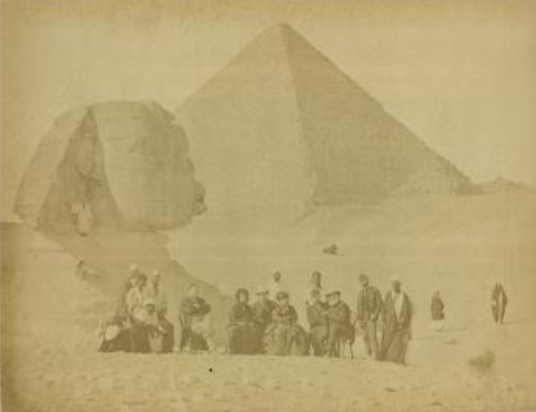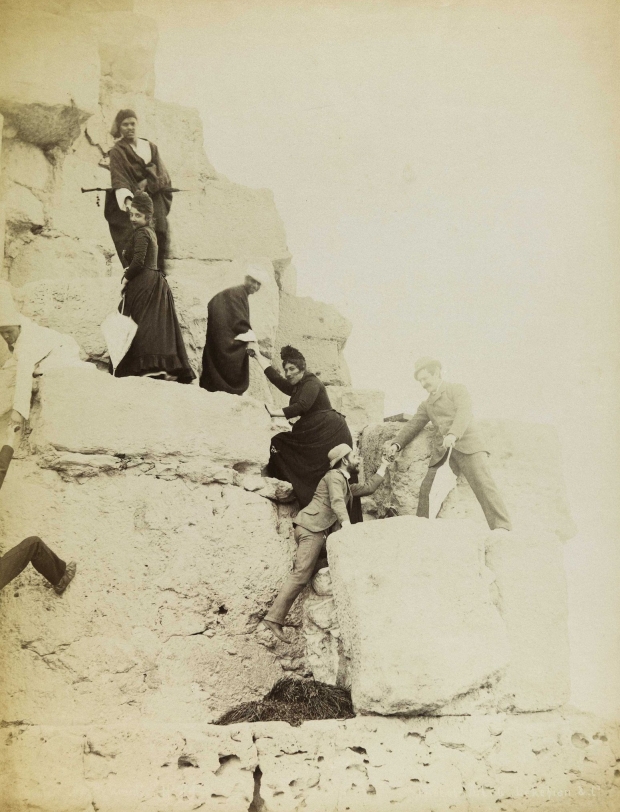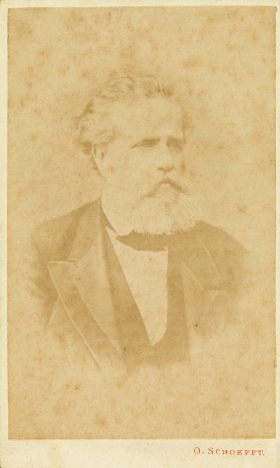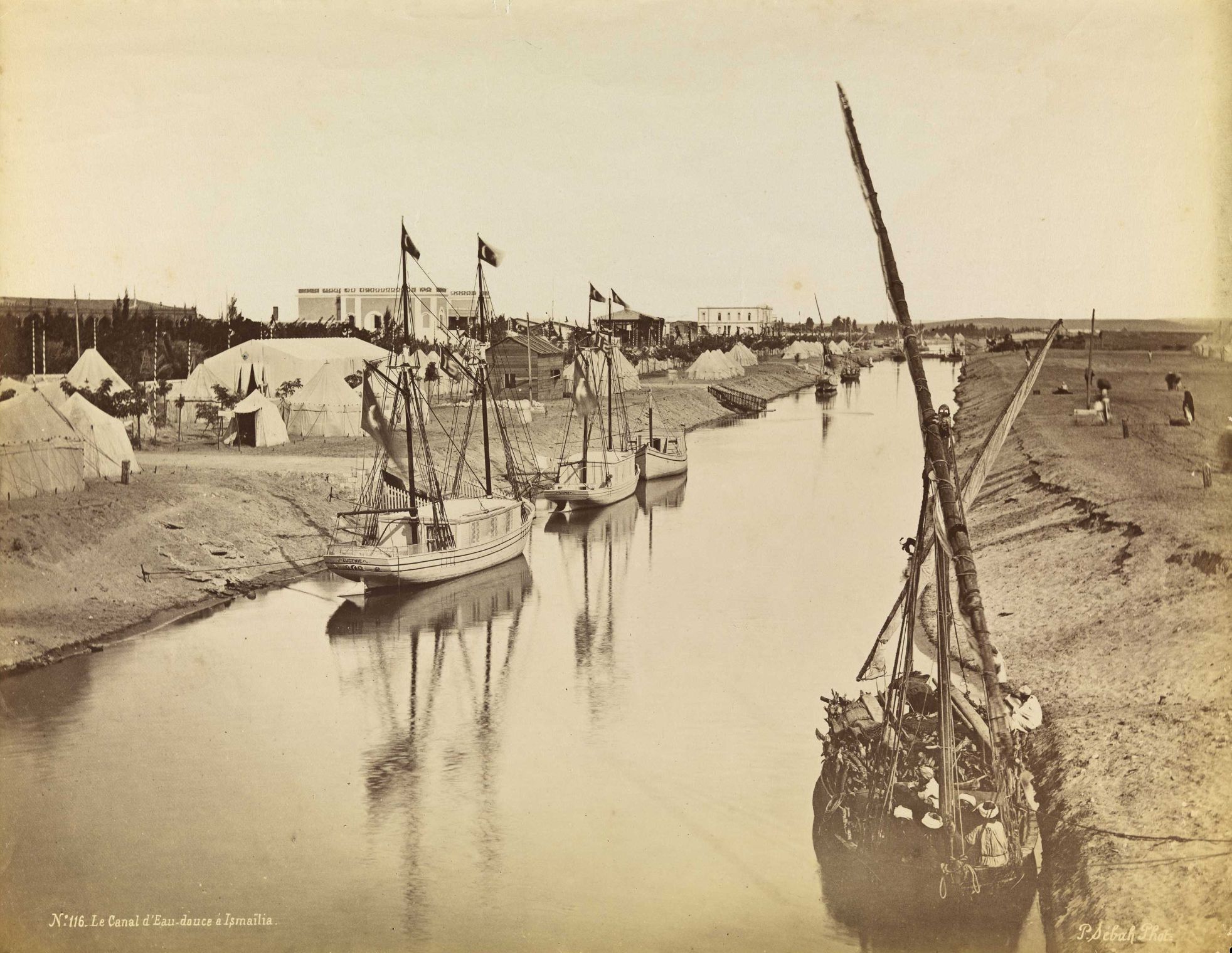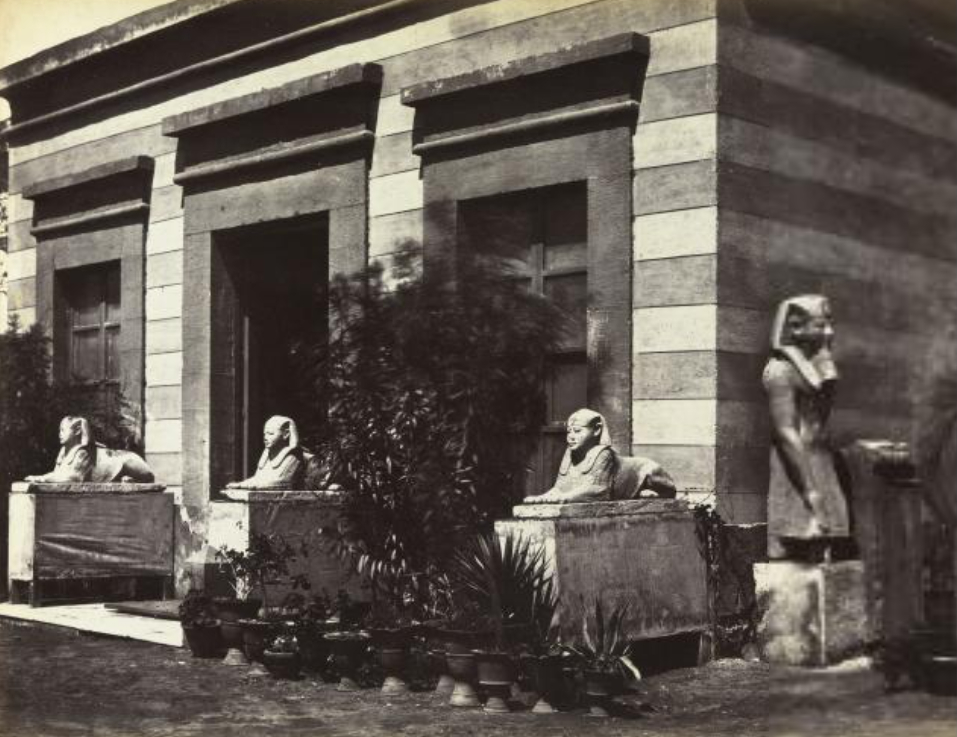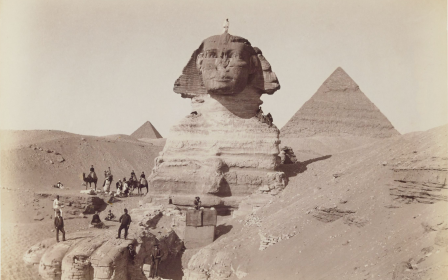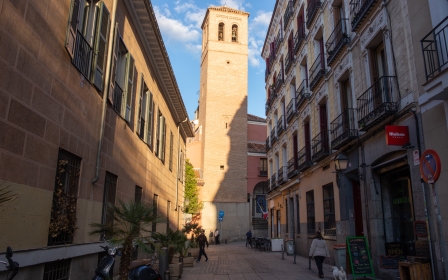When the last emperor of Brazil went to Egypt

On 5 November 1871, a group of around 15 travellers, among them the renowned French archaeologist Francois Auguste Mariette, founder of the Egyptian Museum in Cairo, arrived at the Giza Pyramids after attending mass in a Franciscan church.
Heading the group was a special guest on a historic trip: Dom Pedro II. The emperor of Brazil was not only the first Brazilian head of state to travel to the Ottoman Empire and the Middle East, he was also the first from the Americas to visit Egypt.
“[The Pyramids] seem small until you reach them, and you only get an idea of the height of the great pyramid when you observe those who climb it and become more and more little,” Dom Pedro II wrote in his diary, which is now held at the Museu Imperial of Petropolis, in Rio de Janeiro.
“I climbed up easily with the help of the Arabs, and on top we were more than thirty,” he writes. “As soon as we reached the top of the pyramid, we let out many hurrahs, waved our handkerchiefs and I sat on a stone from the time of Chufu and wrote a few words.”
New MEE newsletter: Jerusalem Dispatch
Sign up to get the latest insights and analysis on Israel-Palestine, alongside Turkey Unpacked and other MEE newsletters
Dom Pedro II and his wife, Dona Thereza Cristina, had left Rio de Janeiro around five months earlier for their first international trip after delegating the responsibilities of the throne in their absence to their daughter, Princess Regent Isabel.
Known for his interest in different cultures, languages, the ancient world and the emerging art and technology of photography, Dom Pedro II, then 46, embarked on a journey that was to last 11 months and take him and his entourage to Europe and the Near East.
“It was truly a ground-breaking journey in the 19th century,” Roberto Khatlab, author of the book The Journeys of Dom Pedro II, told Middle East Eye.
“Dom Pedro II studied and read about the Middle East, the people, the culture, the languages, the religions, and in 1871 it was time to get to know the region in situ.”
After months of touring Europe, where they visited France immediately following the fall of Napoleon III, and Germany after the unification of the German states, on the morning of 28 October they arrived at the Port of Alexandria. They were received by the khedive’s protocol and the honorary consul of Brazil in Alexandria, Michel Debbané.
The group embarked on a journey of a lifetime that Dom Pedro II would use to explore the country, establish contacts and discover new technologies and knowledge that could benefit Brazil, while helping to make his country known in the Middle East.
“Brazil became known in the East thanks to the emperor and the Arabic newspaper of the time that wrote about [it],” Khatlab said.
“I found [archival] newspapers in Arabic presenting Brazil, and the emperor as one of the reasons that attracted Arabs to Brazil.”
With last month marking the 150th anniversary of Dom Pedro II’s inaugural trip to Egypt, the Embassy of Brazil in Cairo, in partnership with the Ministry of Culture of Egypt, reissued part of his photographic collection to the Egyptian public for the first time.
“The exhibition aimed at celebrating Brazil-Egypt historic ties by shedding light on an important Brazilian patrimony, which is this beautiful collection of photographs,” Fernanda Tansini, the cultural attache at the Brazilian embassy in Cairo and one of the organisers of the event, told MEE.
Titled Back to Egypt, the exhibition was held at the Gezira Art Center, a cultural venue located at the Prince Amry Palace in the affluent district of Zamalek. It was divided into two large rooms, the first dedicated to the figure of Dom Pedro II and his trip to Egypt in 1871, and the second reserved for his second trip to the country five years later.
In a third, smaller room, images of Egypt from the emperor's collection were projected on a loop.
“[Egyptian visitors] were surprised to see these images for the first time and enjoyed seeing their country through the eyes of Dom Pedro II, by the photos he collected and by reading his travel diaries,” Tansini said.
“Many people told me they didn’t know much about Brazilian history, had never heard of a Brazilian emperor, much less of his trips to Egypt, and were fascinated by this story.”
Drawn to Egypt
The publication of Description de L’Égypte from 1809 to 1828, a compilation of the research undertaken in Egypt during Napoleon Bonaparte’s military campaign and occupation of the country, along with the deciphering of the hieroglyphs in 1822, helped create a wave of global interest in the Middle East and Egypt.
The royal’s father, Dom Pedro I, who had been crowned Brazil’s first emperor in 1821 after the country gained independence from Portugal, had amassed the largest collection of Egyptian artefacts in Latin America, and passed his fascination with Egyptian culture down to him.
Dom Pedro II was crowned in 1841 at the age of 15, and soon developed a keen interest in fields such as the arts, ancient studies and photography. He kept up correspondence with well-known Egyptologists, and studied 15 languages, including Hebrew and Arabic.
In 1886, he participated in a translation of the 1001 Nights to Portuguese, unpublished notes of which are now kept in the Imperial Museum of Petropolis, in Rio de Janeiro.
He is also believed to have been the first in Brazil to own a daguerreotype, the first publicly available photographic process. And his passion for photography led him to acquire around 23,000 photographs throughout his life, 500 of which were from Egypt.
These photographs are part of a broader collection called Dona Thereza Cristina Maria now stored at the Brazilian National Library, which also includes books, newspapers, maps and stamps. The collection is also considered a World Heritage, and it was the first Brazilian document to become part of Unesco’s Memory of the World Programme.
Because of the limited expertise at the time in the conservation of old photographs, most of the originals he donated were left untouched for nearly a century. And it was only in 2003 that they were first shown to the public in an exhibition held in Sao Paulo.
As for his diaries, Khatlab says that the Emperor always carried a notebook with him, and generally wrote at the end of the day, balancing the book on his knees or on some rocks beside him, usually by candlelight or the light of a hearth.
“The diary is a complete text on history, anthropology, sociology, religion, technology, botany, customs and architecture,” Khatlab says. The originals are kept in the Museu Imperial de Petropolis, and MEE was given access to a copy of the section describing Egypt.
Both his diaries and collection of photographs represent valuable documents and prime sources of a period of profound historic changes from the perspective of a privileged observer. And they reveal significant aspects of the thinking, scientific discoveries, cultural, social and political diversity, and the diplomatic relations of the time.
“They are a tremendous source of information, and they are not studied at all,” Joaquim Marcal Ferreira de Andrade, coordinator of the Brazilian National Library digital programme, told MEE. “We do not have, up to this moment, such a collection anywhere else in the world. And this is what is special about it,” he added.
Strengthening ties
Besides Dom Pedro II’s fascination with Egypt’s history and archaeology, what drew him to the country was also his intention to strengthen diplomatic and trade ties and to forge new connections. He also wanted to familiarise himself with the latest technologies and knowledge in areas such as agriculture, industry and infrastructure, that could prove useful for Brazil’s development.
In 1858, the Empire of Brazil and the Ottoman Empire had signed a treaty of friendship, commerce and navigation, and since 1865 Brazil had an honorary consul in Alexandria, the Lebanese Debbané, who focused on strengthening the diplomatic and trade bridges with Egypt. The arrival of Dom Pedro II helped to boost those emerging relations.
The first trip, in 1871, was a relatively short stay. But during this time Dom Pedro II was able to familiarise himself with the dynamic port of Alexandria. He could also explore the railway connecting the city with Ismailia, sail the recently completed Suez Canal, discover other port cities such as Port Said and Suez, and make contact with Khedive Ismail and his entourage.
During this trip, the emperor visited the new sugar cane mills established by the French, as Brazil was also an important sugar producer, and he took detailed notes on the railways and the Suez Canal, since he was considering opening new canals in his country.
During this trip, the Emperor visited the advanced sugar cane mills established by the French, as Brazil was also an important sugar producer
From their initial stop in Alexandria, where they spent a day touring the coastal city, Dom Pedro II and his group travelled to Suez and embarked on a four-day trip to Ismailia and Port Said on a small streamer through the Suez Canal, which had been inaugurated only two years earlier, in 1869.
He also spent a week exploring Cairo, where he fulfilled his dream of visiting the Giza Pyramids.
In Cairo they checked in at the Great New Hotel – refusing official accommodation throughout the trip - where they would stay for more than a week.
Dom Pedro II’s first day in the capital, 3 November, was particularly busy, beginning his tour at the Citadel’s Mohammad Ali Mosque.
“The interior is of alabaster and very vast, and the dome rises majestically. Many little birds fluttered chirping inside the mosque and the Arabs consider this a sign of happiness. The arcaded atrium that precedes the mosque is also beautiful and is full of hanging ropes for chandeliers, especially in the approaching Ramadan,” he wrote.
From there Dom Pedro II went to the emblematic Bulak Museum of Antiquities, today the Egyptian Museum in Tahrir, where he was “amazed at the degree of perfection of sculpture among the Egyptians 4,000 years before J.C.,” he wrote.
On his meeting with Khedive Ismail Pasha later that day, he wrote that “he is intelligent and speaks good French, but I think that because of his sybaritic habits he will never be a true reformer”.
The attending Egyptian minister of foreign affairs, Nubar Pasha, fared slightly better in his estimation: “Nubar Pasha, an Armenian, seemed to me very intelligent, but very servile.”
Since no trip to Cairo would be complete without a ride on a camel and a bit of role play, on 6 November, halfway through his stay in Cairo, Dom Pedro II visited Matareya, a district in the north of Cairo, where he rode a camel, dressed in traditional Egyptian clothes.
“I was in Heliopolis [one of the oldest cities of ancient Egypt], in Matarieh of the Arabs. I examined the obelisk of Ositarsen,” he wrote.
“Before going there, I picked leaves from a beautiful sycamore tree which they call the Virgin’s tree, as it is traditional that in its shade Our Lady [Mary] rested during her flight to Egypt,” he added, referring to the story recounted in the Gospel of Matthew.
That night, Dom Pedro II and Dona Thereza Cristina sampled the opulence of the Ottoman court. They were invited to a dinner at Khedive Ismail’s residence where the menu included 15 dishes, including poisson au gratin Genevoises (fish au gratin), filet de bœuf a l’anglaise (beef fillet in English style), and asperge en branche Hollandaise (asparagus in Hollandaise sauce).
Before leaving Cairo, Dom Pedro II still had time on 8 November to visit the library of the Egyptian Institute, run by the German archaeologist Heinrich Karl Brugsch. “There are curious Qurans, especially one because it is from the times of Saladin,” the emperor noted.
“The appearance of an Arab school is curious, because of the constant swaying of the students’ bodies as they read the Quran. I am told that, imitating the swaying of those who ride on camels, they commemorate the flight of Muhammad from Medina to Mecca.”
The following morning, Dom Pedro II again met with Debbané, the honorary consul, before leaving Egypt aboard a ship to Italy.
“What beautiful weather for the journey!” he noted.
“Dom Pedro II’s visit was one of the bases [that helped] nurture and strengthen relations between the Brazilian and Ottoman empires,” Khatlab says.
“And Egypt thus became a sort of springboard for Syrian and Lebanese emigrants [then Ottoman subjects] to Brazil, a country they knew about through the emperor and the Arab newspapers of the time, including [the Egyptian] Al Ahram.”
Dom Pedro II still found the time to visit Egypt a second time, in December 1876, as part of a new 18-month journey that took him, his wife and a small entourage to North America, Europe, the Middle East and North Africa.
That time, the group spent only a few days in Port Said and Cairo before directly departing on a Nile cruise to the south, where they visited the historical cities of Luxor and Aswan and the temples of Abu Simbel. They left Egypt again in January 1877.
The emperor’s reign lasted 49 years, after which Brazil became a republic, and Dom Pedro II – who never visited Egypt again - died in exile in Paris on 5 December 1891.
"[Dom Pedro II] had a substantial fascination connected to figuring out where we come from and where we are going to, so he was fascinated by astronomy and by every field of knowledge connected to understanding the past of humans," Ferreira de Andrade said.
“He did only three trips abroad, and in two of them he went to Egypt. He was absolutely fascinated and connected to its culture and history.”
Middle East Eye delivers independent and unrivalled coverage and analysis of the Middle East, North Africa and beyond. To learn more about republishing this content and the associated fees, please fill out this form. More about MEE can be found here.


